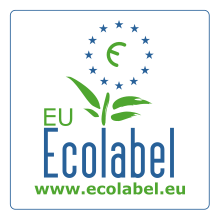Ecolabel
-
ToolsX


In the context of the consultations on the development of the EU Ecolabel criteria for financial products, underway since early 2019, we have produced a response and commented on the second technical report (RT.2) published in December 2019 to ensure that the Ecolabel is based on a referential that is both ambitious and realistic. These comments reflects the position of the French public authorities and takes into account the discussions during workshops with various stakeholders (banks, management companies, associations, NGOs, supervisory authorities).
However, the lack of taxonomic data available today (the publication of financial reports through the prism of taxonomy will only start in 2022) has been a considerable brake on market analysis and testing of Ecolabel thresholds. Therefore, a review of the criteria, envisaged by the Commission during 2022, seems essential to ensure the consistency of the thresholds (based on the first publications of taxonomic data). This time lag between the Ecolabel (expected in the second quarter of 2021) and the application of the taxonomy regulation (at the beginning of 2022 for the objectives of mitigation and adaptation to climate change) must remain a point of attention and is highlighted in our position paper.
In our comments, we reaffirm our support for the implementation of the European Action Plan for Sustainable Finance and the development of an ambitious and realistic Ecolabel, developed in coherence with the other initiatives of the Action Plan: the taxonomy, disclosure and benchmark regulations as well as the EU GBS green bond standard. We have called for the following advances:
- Widen the perimeter of the Ecolabel to:
- Other asset classes: infrastructure funds, private equity and real estate in particular. These sectors focus on the long term and the investor/issuer discussion, they represent an important lever in the transition towards a more sustainable economy;
- Professional and institutional investors who are particularly active in the field of sustainable finance and for whom such a label would make sense;
- Propose that the compliance with the EU Ecolabel for financial product criteria for all types of funds shall be assessed on the legal documentation of the fund (prospectus) where the criteria of the label (exclusions, thresholds, engagement…) must be mentioned, thus allowing the labeling of new funds (without waiting 12 months of adequacy with the criteria of the label) while strengthening investor protection;
- Reinforce the transition aspect of the label, already taken into account via the link with the taxonomy regulation and its definition of transition activities. We propose to go further by relying on the obligation given by the taxonomy regulation to indicate the share of its investments made in taxonomic activities to integrate Capex (and Opex) into the Ecolabel eligibility thresholds. In addition to providing better support to companies currently in transition (by no longer focusing on turnover but also taking into account investment dynamics), this proposal will also broaden the investment universe of the Ecolabel, thereby increasing the possibilities for diversification (and thus limiting financial risks);
- Apply to EU green bonds the exclusions already proposed for equities to issuers that have not implemented a carbon neutrality target in 2050. This proposal limits the possible exposure of EU GBS green bonds to issuers that would be excluded from equity financing in the EU Ecolabel only to those engaged in the ecological transition (in the case of EU green bonds standard, although oriented exclusively towards taxonomic activities, the environmental exclusions do not apply to the issuer). In addition, we encourage the inclusion of all bonds and loans of “green” companies (with more than half of their turnover in taxonomic activities) in order to free them from the financing constraints linked to EU GBS certification (especially for SMEs whose certification costs could be prohibitive), which would also broaden the scope of bond investment without deteriorating the environmental characteristics of the Ecolabel;
- Reinforcement of the shareholder engagement criterion. As engagement and voting policies are generally defined at the level of asset management companies, it is necessary to ensure that they do not conflict with the engagement criteria of eco-labelled funds. Promote shareholder coalitions (creation of an ad hoc platform for eco-labelled funds or, require active adherence to existing initiatives) ;
- Maintaining a high level of environmental exclusions (exploration, refining, production, transportation and storage of fossil fuels, nuclear energy) and social exclusions (tobacco-related activities, pornography, compliance with ILO conventions) beyond the requirements of taxonomy.



